Categories: Sharing experience, Electrician at home
Number of views: 122029
Comments on the article: 6
Halogen Transformers
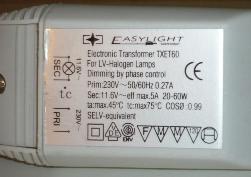 Point recessed lights Today they have become the same ordinary normal thing in the interior of a house, apartment, office as an ordinary chandelier or a fluorescent lamp.
Point recessed lights Today they have become the same ordinary normal thing in the interior of a house, apartment, office as an ordinary chandelier or a fluorescent lamp.
Many probably paid attention to the fact that sometimes light bulbs, if there are several, in these same spotlights shine differently. Some lamps shine quite brightly, while others burn, at best, at half light. In this article we will try to deal with the essence of the problem.
So, for starters, a little theory. Halogen bulbs the recessed luminaires installed in the points are designed for an operating voltage of 220 V and 12 V. In order to connect bulbs designed for a voltage of 12 V, a special transformer device is needed.
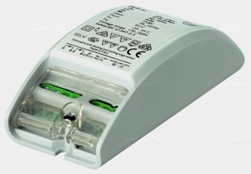 Transformers for halogen lamps, presented on our market, for the most part - electronic. There are also toroidal transformers, but in this article we will not dwell on them. We only note that they are more reliable than electronic ones, but provided that you have a relatively stable voltage, and the power of the transformer-lamp is correctly balanced.
Transformers for halogen lamps, presented on our market, for the most part - electronic. There are also toroidal transformers, but in this article we will not dwell on them. We only note that they are more reliable than electronic ones, but provided that you have a relatively stable voltage, and the power of the transformer-lamp is correctly balanced.
An electronic transformer for halogen lamps has several advantages compared to an ordinary transformer. These advantages include: soft start (not all transes have it), short circuit protection (also not all), low weight, small size, constant output voltage (most), automatic adjustment of the output voltage. But all this will work correctly only with proper installation.
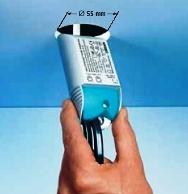 It just so happened that many self-taught electricians or people involved in wiring read little books on electrical engineering, and even less so instructions that are attached to almost all devices, in this case step-down transformers. In this very instruction in black and white it is written that:
It just so happened that many self-taught electricians or people involved in wiring read little books on electrical engineering, and even less so instructions that are attached to almost all devices, in this case step-down transformers. In this very instruction in black and white it is written that:
1) the length of the wire from the transformer to the lamp should be no more than 1.5 meters, provided that the cross-section of the wire is not less than 1 mm square.
2) if it is required to connect 2 or more lamps to one transformer, the connection is carried out according to the "star" scheme;
3) if it is necessary to increase the length of the wire from the transformer to the lamp, then it is necessary to increase the section of the wire in proportion to the length;
4) it is necessary to calculate and correctly select the power of the installed lamps and, accordingly, the power of the transformer.
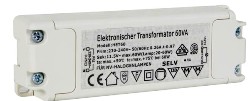 Compliance with such simple rules will save you from many questions and problems that arise during the installation of lighting.
Compliance with such simple rules will save you from many questions and problems that arise during the installation of lighting.
Without particularly going into the laws of physics, we consider each of the points.
1) If you increase the length of the wires - the lamp will shine more dimly, and the wire may begin to heat up.
2) What is a star pattern? This means that a separate wire should be drawn to each lamp and, importantly, the length of all wires should be the same length, regardless of the distance the transformer -> lamp, otherwise the glow of all the bulbs will be different.
3) See paragraph 1.
4) Each transformer for halogen lamps is designed for a specific power. There is no need to take a 300 W transformer and power a 20 W bulb on it.
Firstly, it makes no sense and secondly there will be no matching transformer-> lamp, and something from this chain will necessarily burn. It is only a matter of time.
For example, for a transformer with a power of 105 W, 3 lamps of 35 W, 5 of 20 W can be used, but this is subject to the use of high-quality transformers.
 The reliability of the transformer is largely dependent on the manufacturer. Most of the electrical equipment on our market is made, you know where, in China. Price is usually consistent with quality.When choosing a transformer, carefully read the instructions (if any), or what is written on the box or the transformer itself.
The reliability of the transformer is largely dependent on the manufacturer. Most of the electrical equipment on our market is made, you know where, in China. Price is usually consistent with quality.When choosing a transformer, carefully read the instructions (if any), or what is written on the box or the transformer itself.
As a rule, the manufacturer writes the maximum power that this device is capable of. In practice, it is necessary to subtract about 30% from this figure, then there is a chance that the transformer will last for some time.
If all the wiring has already been completed and there is no way to remake the wiring according to the "star" scheme, the best option would be if each bulb is powered by its own transformer. At first, it will cost a little more than one trance for 3-4 lamps, but later on, during operation, you will understand the advantages of this scheme.
What is the advantage? If one transformer fails, only one lamp will not shine, which, you see, is quite convenient, because the main lighting still remains in operation.
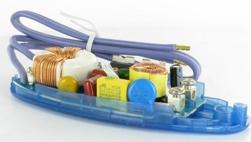 If you need to adjust the intensity of the light, that is, use dimmer, an electronic transformer will have to be abandoned, since most electronic transformers are not designed to work with a dimmer. In this case, a toroidal step-down transformer can be used.
If you need to adjust the intensity of the light, that is, use dimmer, an electronic transformer will have to be abandoned, since most electronic transformers are not designed to work with a dimmer. In this case, a toroidal step-down transformer can be used.
If this seems a little costly to you, hang a separate transformer for each light bulb, instead of light bulbs designed for 12 V, install lamps for 220 V, providing them with a soft starter, or, if the design of the lamps allows, change the lamps to others, to An example of an economical lamp is MR-16 LED. We described this in more detail in a previous article.
 When choosing a transformer for halogen bulbs, opt for high-quality, more expensive transformers. Such transformers are equipped with many protections: from short circuit, from overheating, equipped with a soft start lamp, which significantly, 2-3 times prolongs the life of the bulbs. And, in addition, high-quality transformers undergo many tests for safe operation, fire safety, compliance with European standards, which cannot be said about cheaper models, which, for the most part, appear from nowhere.
When choosing a transformer for halogen bulbs, opt for high-quality, more expensive transformers. Such transformers are equipped with many protections: from short circuit, from overheating, equipped with a soft start lamp, which significantly, 2-3 times prolongs the life of the bulbs. And, in addition, high-quality transformers undergo many tests for safe operation, fire safety, compliance with European standards, which cannot be said about cheaper models, which, for the most part, appear from nowhere.
In any case, all the rather complicated technical issues, which include the choice of transformers for halogen lamps, are best left to professionals.
See also at e.imadeself.com
:
